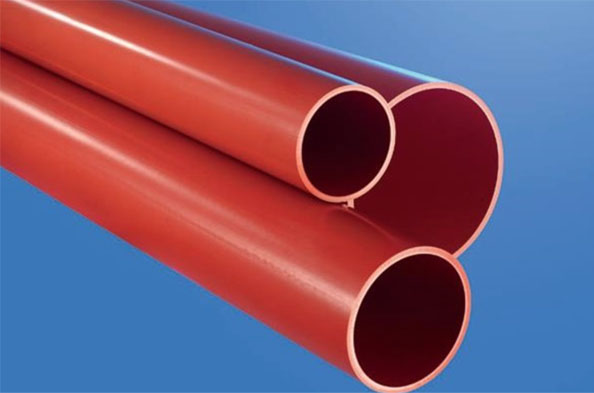An In-Depth Look at Direct Burial Conduits
By Space Coast Daily // March 1, 2025

What is a direct burial conduit? It is a pipe system that can be directly installed underground without the need for additional trenches or supports.
It has thick pipe walls or coatings to endure load-bearing stress over time. Their corrosion-resistant materials shield cables from soil pressure, moisture, and mechanical shock.
Engineers choose it in settings for electric power lines, communication cables, and fiber-optic systems. Its structure cuts upkeep needs and boosts long-term service life.
Advantages of Direct Burial Conduits
Direct burial conduits have become a common choice in cable planning due to the following advantages:
1. Protecting the Power System
A well-chosen direct burial conduit shields conductors against soil pressure, shifting rocks, and corrosive elements. It lengthens the life expectancy of cables carrying high-voltage power or communication signals.
For example, PVC electrial conduit can resist chemical erosion from soils. On the other hand, galvanized steel options can endure mechanical abrasion from stray debris. With such barriers, direct burial conduit systems maintain dependable insulation quality and safeguard against moisture infiltration that prompts arcing or short circuits.
2. Easy Maintenance and Upgrades
Engineers prefer direct burial conduit setups for cable extraction, inspection, and replacement. If an operator needs to replace fiber-optic lines, there’s no need to dig open large swaths of earth.
Direct buried conduit systems reduce time, labor, and damage to adjacent circuits. In urban zones, direct burial conduit systems provide an organized pathway for future expansion. Pulling new conductors through existing conduits is efficient for the lower stoppage.
3. Improved Pipeline Organization
When numerous utilities share a narrow corridor, direct burial conduit installations confirm that power, data, and control lines are separated. It decreases electromagnetic interference among neighboring circuits.
Moreover, direct burial conduits help improve the organization of pipe systems. It can neatly arrange cables inside the conduit, avoiding cables being laid haphazardly underground. It optimizes pipe layout and facilitates maintenance personnel from different departments for repair and replacement.
4. Enhanced Aesthetics
Surface clutter may spoil the image of industrial parks, commercial avenues, and residential neighborhoods. While routing conductors through a direct burial conduit beneath the ground, above-grade poles, and wiring vanish from sight. It simplifies architectural planning and preserves design steadiness.
Urban projects might adopt deeper burial depths for large-diameter conduits to keep sidewalks clear and landscaping consistent. With those cables tucked away, direct burial conduit installations offer dependability and a tidier environment.
Considerations for Direct Burial Conduits
When selecting and installing direct burial conduits, the following key factors need to be considered comprehensively to ensure safety, reliability, and compliance:
■ Types of Cables and Conduits: Choose the appropriate conduit material based on the purpose of the cable (such as power transmission, communication, etc.) and voltage level. They should be designed for direct buried applications with appropriate insulation, moisture resistance, and robustness. For example, rigid PVC offers moisture resistance and shields conductors from soil compression.
■ Burial Depth: Burial depth needs differ by region, voltage, external impact, and temperature. The burial depth should comply with local regulations and take into account future maintenance convenience.
■ Soil Features: Soil resistivity, pH, degree of looseness, and moisture affect the conductor. To avert an electrolytic decline in corrosive or damp settings, coat the conduit. Take corresponding protective measures based on soil features, such as laying a sand cushion layer or using an anti-corrosion coating.
■ Planning and Layout: Avoid steep bends for less conductor strain and insulation failure. To simplify upkeep, map channels away from root systems and high-traffic areas.
■ Local Regulations: Confirm with local inspectors for construction requirements. Some regulations enforce tracer-wire or mechanical protection layers over direct burial conduits to aid detection and preclude accidental digs.
What Type of Conduit is Approved for Direct Burial?
Due to the special conditions of the soil, only specific pipe materials are allowed for direct burial, including:
1. Rigid Metal Conduit
Rigid metal conduits are usually made of galvanized steel and stainless steel materials, which have high strength and good impact resistance and can withstand large soil pressure.
However, localized soil chemistries can degrade metal surfaces over time in areas with acidic or alkaline conditions. Therefore, metal conduits need to add anti-corrosion treatment. In addition, rigid metal conduits are heavy and expensive, so they are not the preferred material.
2. MPP Electric Power Cable
MPP electric power cables have many significant advantages as direct burial conduits. They feature:
■ High temperature resistance: Maintain sufficient ring stiffness at high temperatures, effectively protecting high-voltage power cables.
■ High ring stiffness: Withstand soil loads without significant deformation.
■ Strong impact resistance: Good impact resistance at low or high temperatures.
■ Environmental adaptability: MPP electric power cables have excellent tensile and bending properties, suitable for trenchless projects such as horizontal directional drilling, which needs high tensile and bending strength for pipes and welding points.
■ High flexibility and bendability: MPP electric power cables have high flexibility and axial bendability.
PVC-C Underground Power Cable Duct
PVC-C underground power cable duct is the most commonly employed direct burial conduit owing to its high performance and cost-effectiveness. It features:
■ Strong corrosion resistance: Excellent chemical corrosion resistance, suitable for use in humid or acidic environments.
■ Convenient construction: Lightweight and easy to connect, no need for complex installation tools.
■ Sturdy: Prevents damage from rocks and external impacts.
■ Eco-friendly and non-toxic: Meets environmental standards, does not contain heavy metals, and won’t harm the environment and human health.
■ Cost-effectiveness: Compared to other conduits, their price is cheaper.
Considering construction convenience, cost-effectiveness, corrosion resistance, and environmental friendliness, PVC-C conduits and MPP conduits are ideal choices for direct burial projects.
Where to Order Underground Electrical Conduit Pipes?
Choosing the appropriate direct burial conduit is not only related to the safe transmission of electricity or optical cables but also directly affects the service life and maintenance costs of the project. The PVC-C Underground Power Cable Duct from LESSO has become the preferred choice for many engineering projects due to its excellent performance. It suits direct buried electrical conduit applications. They offer:
■ A volume resistivity above 1.0×10 Ω·m for insulation.
■ Excellent flame retardancy with an oxygen index over 40.
■ Lightweight conduits facilitate straightforward installation.
■ High flexibility and temperature resistance diminish cracking risks.
■ Corrosion resistance, which helps them serve a longer life.
Conclusion
As an efficient underground cable protection system, underground electric conduits play an important role in cable protection, preventing soil pressure, mechanical impact, and chemical corrosion while simplifying the construction process. LESSO offers PVC conduits designed specifically for underground installation, providing durability and economic benefits. Contact them now for enhanced wire protection!












